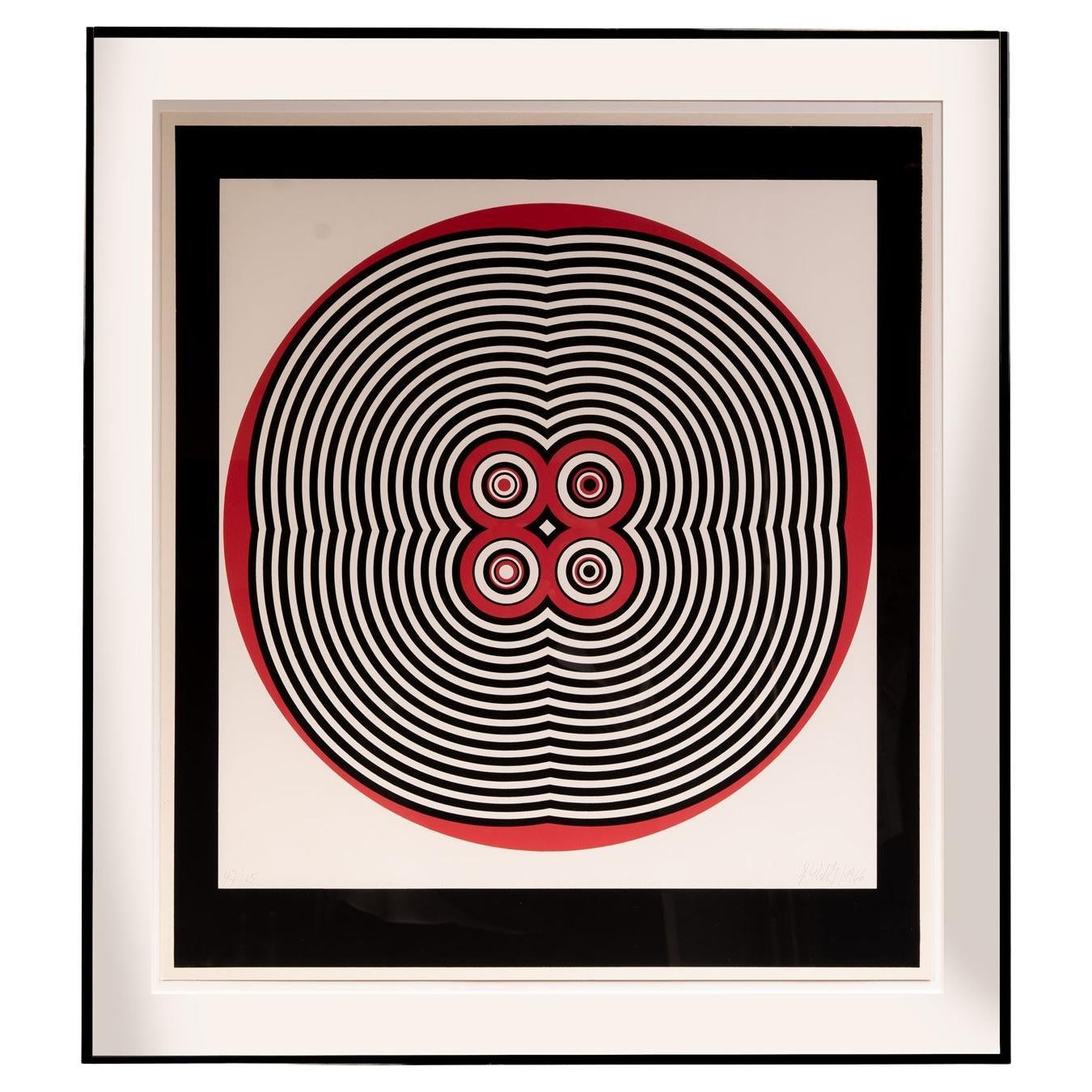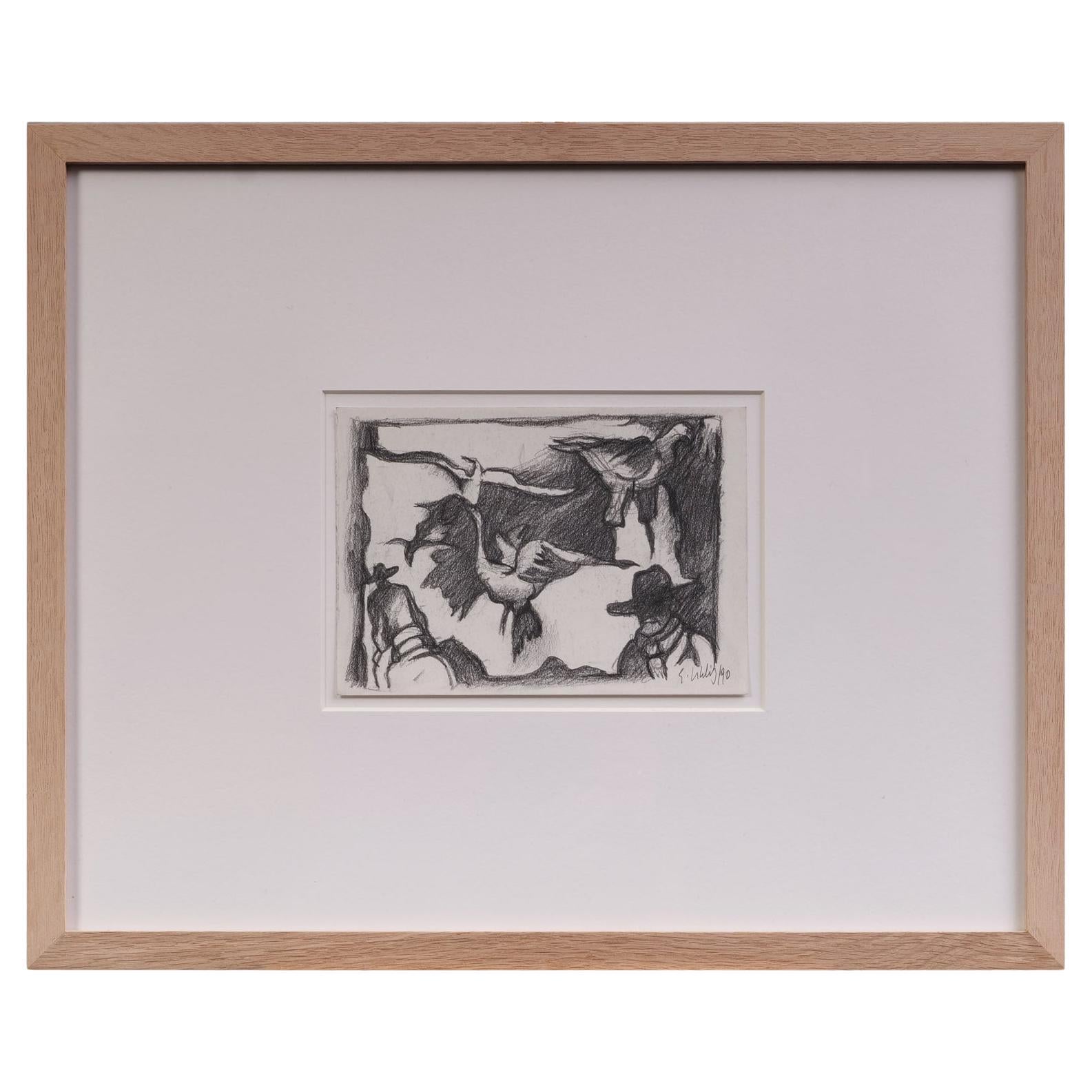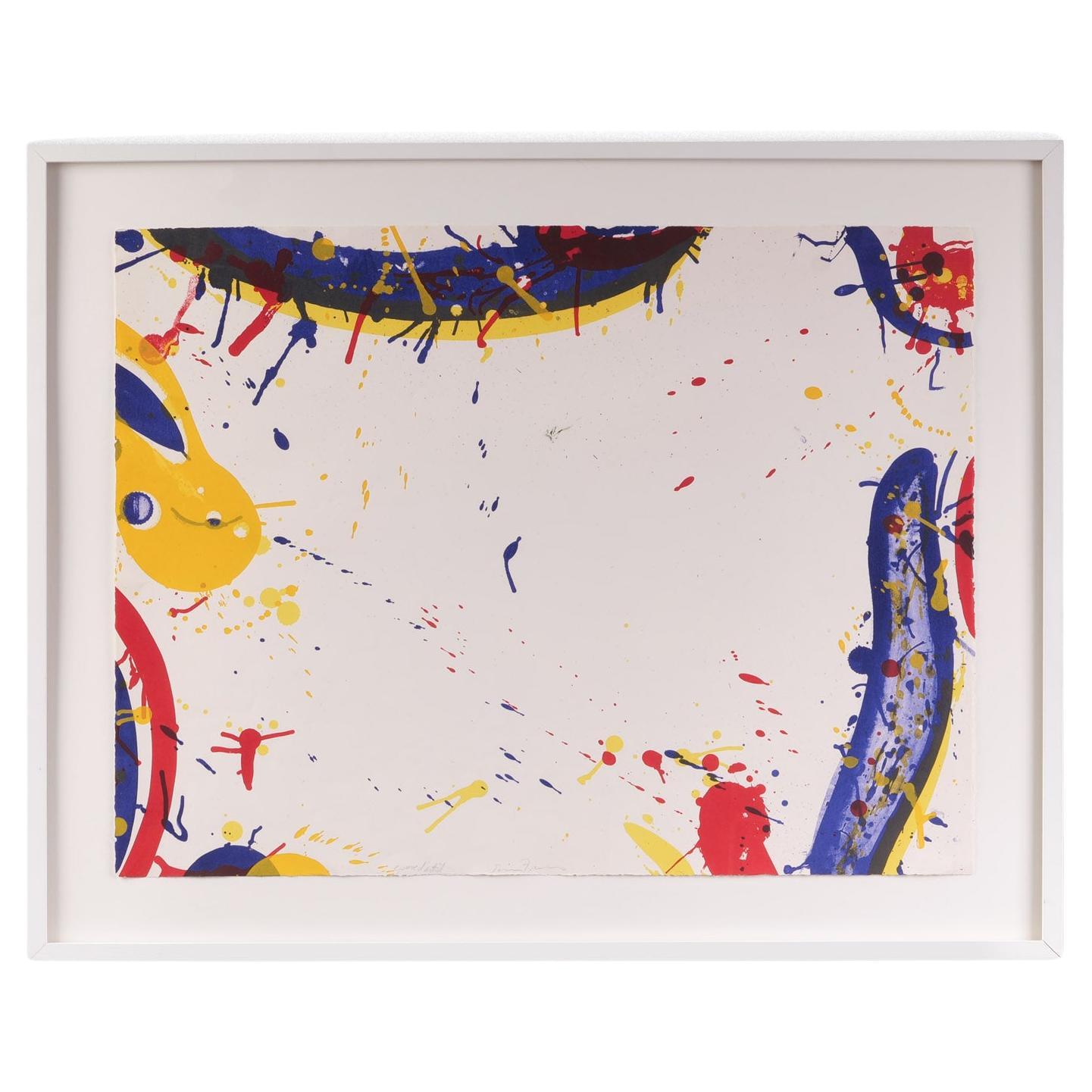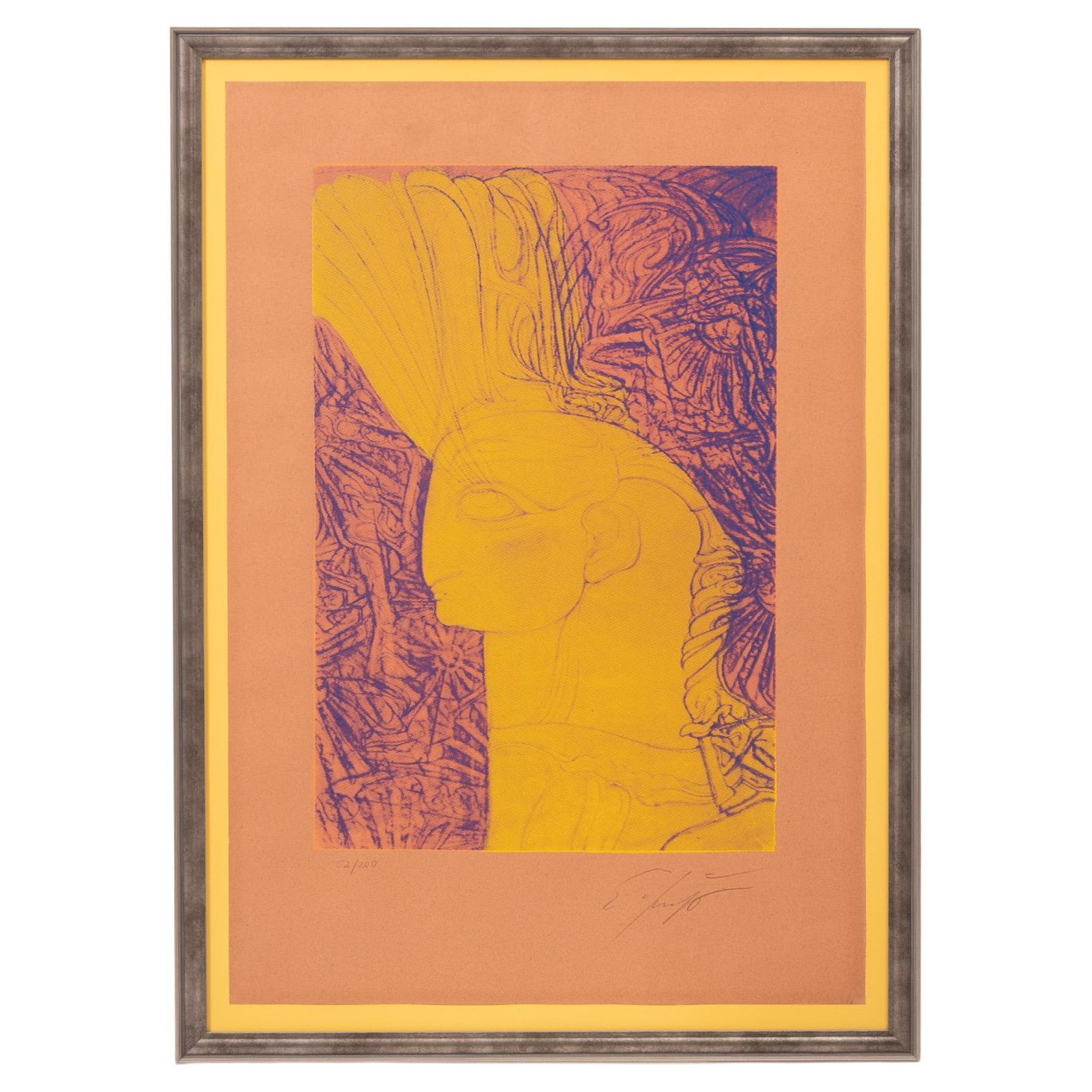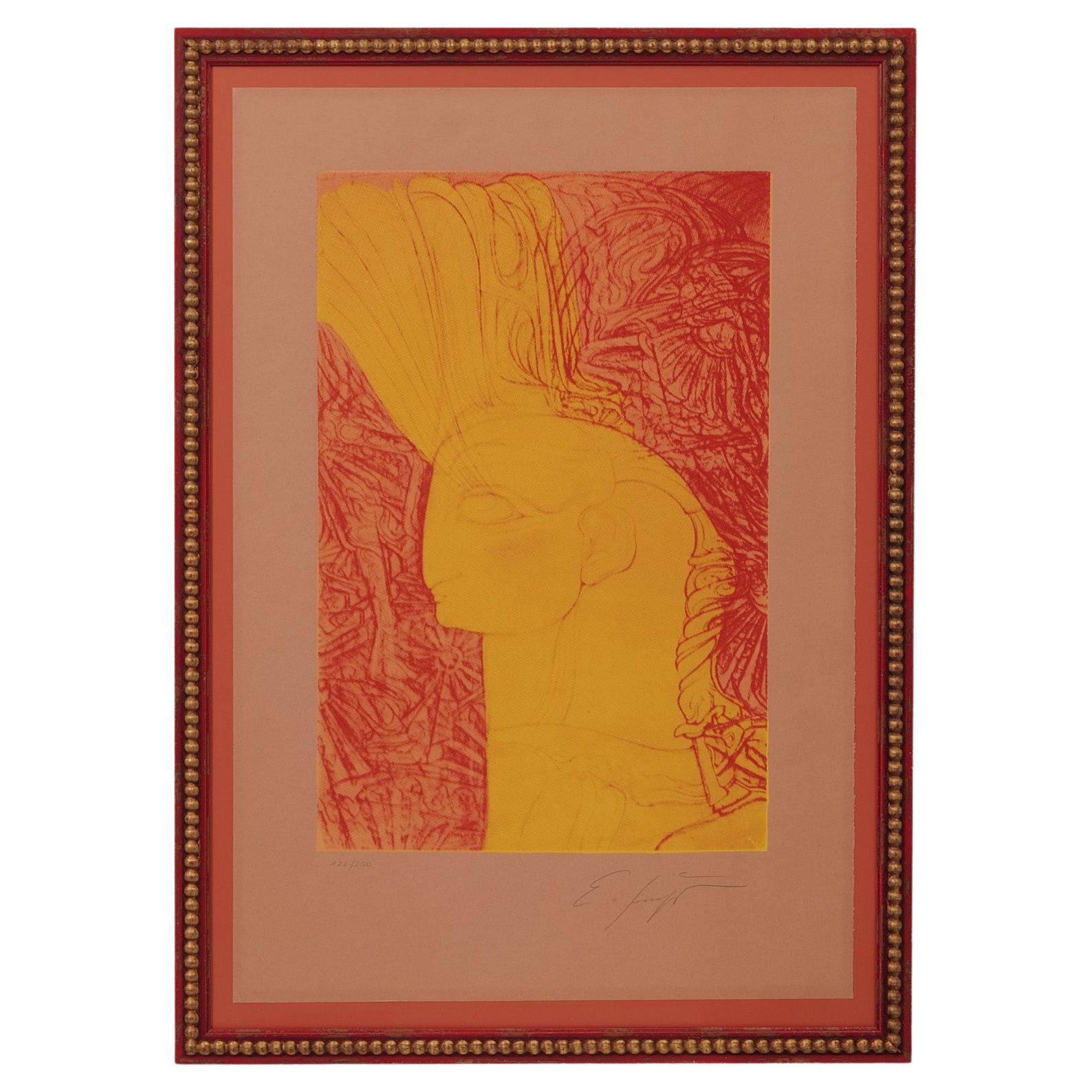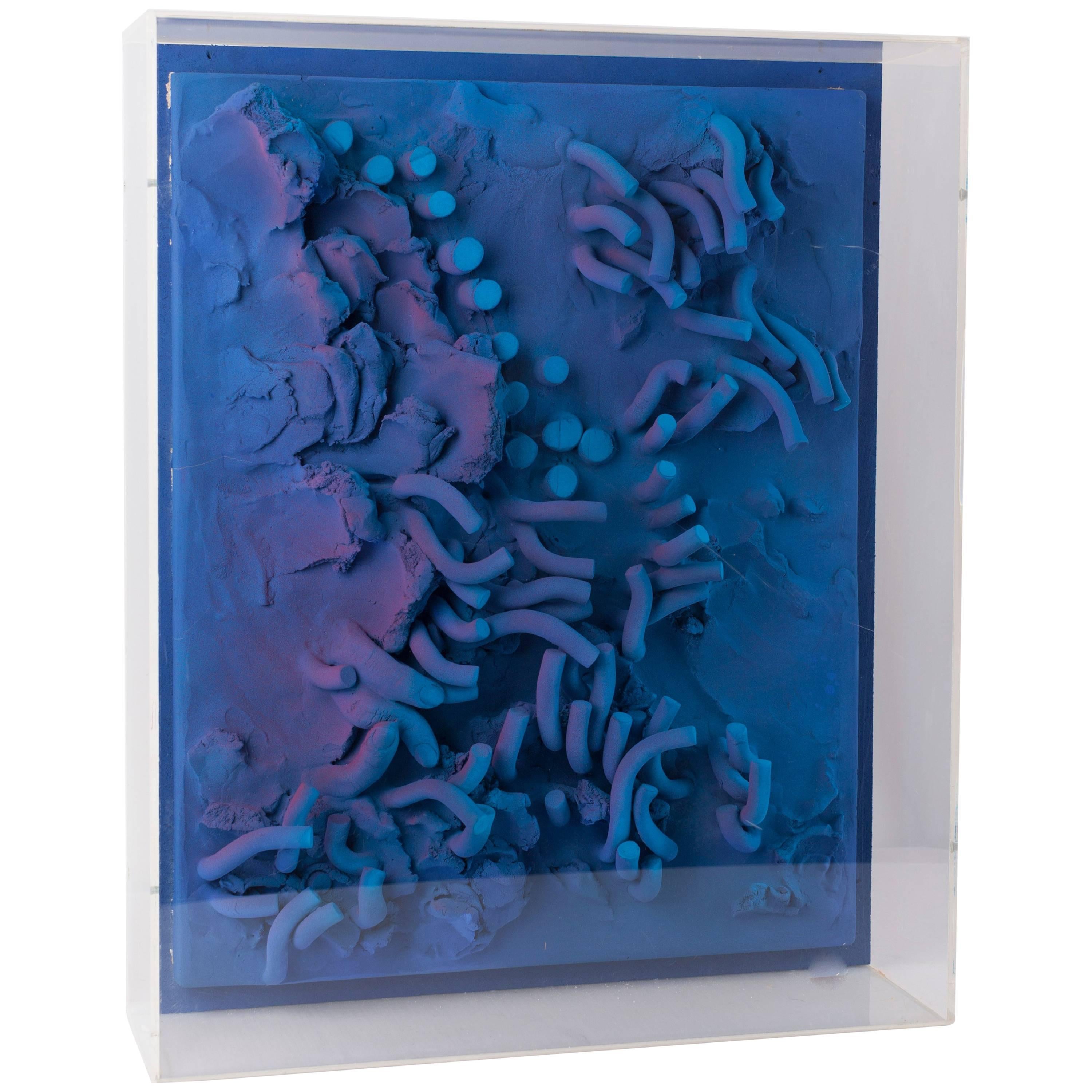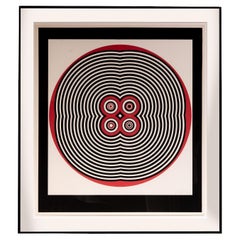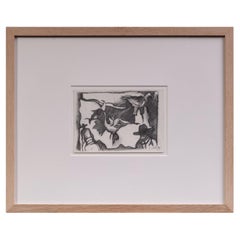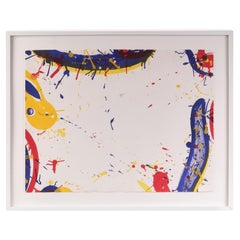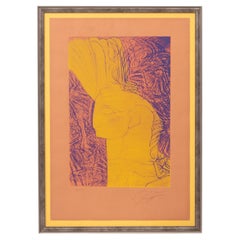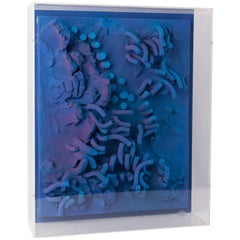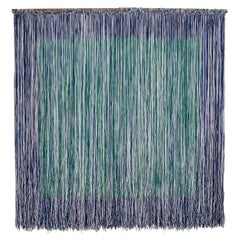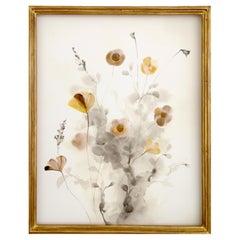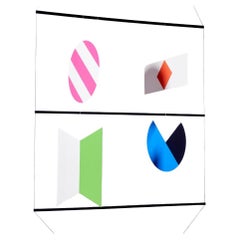Items Similar to Gerhard Uhlig Watercolor “untitled”, created in 1984
Want more images or videos?
Request additional images or videos from the seller
1 of 6
Gerhard Uhlig Watercolor “untitled”, created in 1984
About the Item
Gerhard Uhlig (1926-2015)
Watercolor “untitled”, created in 1984, signed and dated by hand, framed behind glass
Dimensions:
Frame size: 43 x 34 cm
Sheet size: 15 x 10 cm
Gerhard Uhlig developed his art out of abstract modernism. Artistic positions such as those of Willi Baumeister, one of the most important representatives of abstract painting, inspired him to develop his own graphic formal language, which, with its geometric-constructive pictorial elements, ties in with both concrete art and OP art, a form of abstract art that attempts to create optical illusions using geometric forms. Uhlig's pictorial compositions are precisely executed lines and color accents that are characterized by an astonishing variety of forms and colors, suggesting abstract spaces and volumes. Analogous to his art didactic studies, he approaches his works in a complex, almost scientific manner, always in search of new perceptions that lead to new designs. He has also made a name for himself in art didactics: from 1969 onwards, Uhlig spent 16 years as a subject representative for art education at the Regierungspräsident Münster, where he campaigned for reforms and played a decisive role in shaping grammar school art education in Westphalia.
- Dimensions:Height: 16.93 in (43 cm)Width: 13.39 in (34 cm)Depth: 1.19 in (3 cm)
- Style:Modern (Of the Period)
- Materials and Techniques:
- Place of Origin:
- Period:1980-1989
- Date of Manufacture:1984
- Condition:Wear consistent with age and use.
- Seller Location:Münster, DE
- Reference Number:1stDibs: LU9172242387842
About the Seller
5.0
Recognized Seller
These prestigious sellers are industry leaders and represent the highest echelon for item quality and design.
Established in 2000
1stDibs seller since 2023
- ShippingRetrieving quote...Shipping from: Münster, Germany
- Return Policy
Authenticity Guarantee
In the unlikely event there’s an issue with an item’s authenticity, contact us within 1 year for a full refund. DetailsMoney-Back Guarantee
If your item is not as described, is damaged in transit, or does not arrive, contact us within 7 days for a full refund. Details24-Hour Cancellation
You have a 24-hour grace period in which to reconsider your purchase, with no questions asked.Vetted Professional Sellers
Our world-class sellers must adhere to strict standards for service and quality, maintaining the integrity of our listings.Price-Match Guarantee
If you find that a seller listed the same item for a lower price elsewhere, we’ll match it.Trusted Global Delivery
Our best-in-class carrier network provides specialized shipping options worldwide, including custom delivery.More From This Seller
View AllGerhard Uhlig 1960s op-art screen print "untitled" 1966
Located in Münster, DE
Gerhard Uhlig (1926-2015)
Screenprint "untitled", signed and numbered by hand, Ex. 47/65, created in 1966, framed behind glass
Dimensions:
Sheet size 63.5 x 58.5 cm
Frame size 90...
Category
Vintage 1960s German Modern Contemporary Art
Materials
Paint, Paper
Gerhard Uhlig (1926-2015) Drawing with graphite pencil, unique “untitled” 1990
Located in Münster, DE
Gerhard Uhlig (1926-2015)
Drawing with graphite pencil, unique “untitled”, signed and dated by hand, created 1990, framed behind glass
Dimensions:
Sheet size 15 x 21 cm
Frame siz...
Category
1990s German Modern Contemporary Art
Materials
Paper
Sam Francis "Jubilee" color lithograph, created 1964
By Sam Francis
Located in Münster, DE
Sam Francis (1923 San Mateo - 1994 Santa Monica)
"Jubilee" color lithograph, created 1964, edition of 50 copies, signed, numbered and dated, Ex.: e.a.
Dimensions: 50.5 x 65.5 cm
Sam Francis was an American painter and graphic artist. His work is classified as Abstract Expressionism or Color Field Painting
Sam Francis is one of the most important American artists, born in San Mateo (California) in 1923, died in Santa Monica in 1994. After a plane crash during his service in the US Air Force, he began painting in 1944 during his convalescence and then studied under David Park at the California School of Fine Arts in San Francisco. His early abstractions, which are still reminiscent of Clyfford Still and Jackson Pollock, show spontaneous painterly gestures that led to the typically American "all over" structure: the canvas is completely covered with dots, spots, marks and other traces of the painter's brush. When Francis was in Paris from 1950 to 1957, he abandoned color and broke new ground with works such as "White Painting" (1950). But as early as the summer of 1951 in the south of France, he used pink and red again, only to return to the full palette later on. Sometimes he used all the colors and their variations in tone, sometimes he let one color dominate, as in "Blue Balls" (1960). Although Francis has been associated with Color Field painting, this must be seen as an aid to classification, to help one come to terms with a highly original visual language.
When "fields" appear in Francis' work, they are almost never (if ever) color fields. Instead, they have an interplay of foreground and background. They often create depth, which makes the canvas more of a "color space".
It is typical of Sam Francis' pictorial strategies that he often leaves the center of the picture free...
Category
Vintage 1960s American Modern Contemporary Art
Materials
Paint, Paper
Ernst Fuchs (1930 - 2015) "Head of a cherub", created in 1982 Color silkscreen
By Ernst Fuchs
Located in Münster, DE
Ernst Fuchs (1930 - 2015)
"Head of a cherub", created in 1982
Color silkscreen, ed. 200 pieces, signed and numbered
Dimensions 67.7 cm x 45 cm
Ernst Fuchs was born on February 13, 1930 in Vienna Ottakring as the only child of Maximilian and Leopoldine Fuchs; his father was of Jewish descent, which is why his grandfather and father emigrated to the USA and Shanghai in 1938 after the annexation of Austria by the Third Reich. To protect little Ernst from anti-Semitic hostility, it was decided to baptize him according to the Roman Catholic rite in 1942. The 12-year-old Ernst Fuchs was allowed to choose his own baptismal name and chose Ernst Peter Paul, in honor of the painter Peter Paul Rubens, whom he admired at the time. Around the same time, his godmother's brother, the painter and restorer Alois Schiemann, taught him the basics of drawing and painting. Until the age of 15, he attended the St. Anna painting school in Vienna, where he was taught sculpture and painting by Emmy Steinböck and Fritz Fröhlich.
After the war, Ernst Fuchs was finally able to take up his longed-for studies at the Academy of Fine Arts in Vienna, which he had previously been denied for racist reasons. His teachers were first Robin Andersen, then Albert Paris Gütersloh. While still a student, he was allowed to hold his first solo exhibition in Paris in 1949, and soon afterwards, in 1950, he also moved to the French capital. Ernst Fuchst traveled through Europe and the USA for six years before taking an extended stay at the Dormition Monastery on Mount Zion in Israel in 1957 to study icon painting in depth. He finally returned to Vienna in 1962, where he founded the Vienna School of Fantastic Realism with former fellow students, of which he himself was to become the most important representative. The early years in particular were characterized by a strong surrealism; mythical and religious symbols in particular appealed to Ernst Fuchs and permeated his work. Later, Fuchs turned increasingly to Mannerism.
Ernst Fuchs' artistic spectrum broadened over the years: he sang and recorded various albums, which, like the majority of his paintings, were inspired by mystical motifs, and he designed stage sets for such famous operas as Wagner's Parsifal and Lohengrin or Mozart's Die Zauberflöte. Ernst Fuchs also wrote philosophical treatises. He repeatedly collaborated with other artists, including the musicians Klaus Schulze...
Category
Vintage 1980s Austrian Modern Contemporary Art
Materials
Paper
Ernst Fuchs (1930 - 2015) "Head of a cherub", created in 1982 Color silkscreen
By Ernst Fuchs
Located in Münster, DE
Ernst Fuchs (1930 - 2015)
"Head of a cherub", created in 1982
Color silkscreen, ed. 200 pieces, signed and numbered
Dimensions 67.7 cm x 45 cm
Ernst Fuchs was born on February 13, 1930 in Vienna Ottakring as the only child of Maximilian and Leopoldine Fuchs; his father was of Jewish descent, which is why his grandfather and father emigrated to the USA and Shanghai in 1938 after the annexation of Austria by the Third Reich. To protect little Ernst from anti-Semitic hostility, it was decided to baptize him according to the Roman Catholic rite in 1942. The 12-year-old Ernst Fuchs was allowed to choose his own baptismal name and chose Ernst Peter Paul, in honor of the painter Peter Paul Rubens, whom he admired at the time. Around the same time, his godmother's brother, the painter and restorer Alois Schiemann, taught him the basics of drawing and painting. Until the age of 15, he attended the St. Anna painting school in Vienna, where he was taught sculpture and painting by Emmy Steinböck and Fritz Fröhlich.
After the war, Ernst Fuchs was finally able to take up his longed-for studies at the Academy of Fine Arts in Vienna, which he had previously been denied for racist reasons. His teachers were first Robin Andersen, then Albert Paris Gütersloh. While still a student, he was allowed to hold his first solo exhibition in Paris in 1949, and soon afterwards, in 1950, he also moved to the French capital. Ernst Fuchst traveled through Europe and the USA for six years before taking an extended stay at the Dormition Monastery on Mount Zion in Israel in 1957 to study icon painting in depth. He finally returned to Vienna in 1962, where he founded the Vienna School of Fantastic Realism with former fellow students, of which he himself was to become the most important representative. The early years in particular were characterized by a strong surrealism; mythical and religious symbols in particular appealed to Ernst Fuchs and permeated his work. Later, Fuchs turned increasingly to Mannerism.
Ernst Fuchs' artistic spectrum broadened over the years: he sang and recorded various albums, which, like the majority of his paintings, were inspired by mystical motifs, and he designed stage sets for such famous operas as Wagner's Parsifal and Lohengrin or Mozart's Die Zauberflöte. Ernst Fuchs also wrote philosophical treatises. He repeatedly collaborated with other artists, including the musicians Klaus Schulze...
Category
Vintage 1980s Austrian Modern Contemporary Art
Materials
Paper
A.R. Penck Color etching, “untitled”, 1990s
By A.R. Penck (Ralf Winkler)
Located in Münster, DE
A.R. Penck (1939 Dresden - 2017 Zurich)
Color etching, “untitled”, created in the 1990s, signed and numbered by hand, ed. 35, copy 32/35
Sheet size: 65.5 x 89.5 cm
Frame size: ...
Category
1990s German Modern Contemporary Art
Materials
Paint, Paper
You May Also Like
Wall Sculpture with Optical Art in Plexiglass created by César Bailleux
By Cesar Bailleux
Located in Doornspijk, NL
Marvellous piece of art made by Dutch artist César Bailleux called Groei Reliëf, meaning Growth Relief.
The name seems to be a reference to the Dutch phenomenon 'groeibriljant' (g...
Category
Vintage 1980s Dutch Organic Modern Contemporary Art
Materials
Plexiglass, Plaster, Wood
$3,525 Sale Price
20% Off
David Roth 'String Painting' 1984
By David Roth
Located in Sharon, CT
A 1980's 'String Painting' by David Roth (1942-). String Paintings present a horizontal scanned 'image' on a field of vertical strings in resistance to gravity, reacting much in the ...
Category
Vintage 1980s American Minimalist Contemporary Art
Materials
String
Poppies Watercolor
By Buenaventura
Located in Madrid, ES
This charming and sophisticated wall decoration has been entirely hand-painted on 100% natural cotton paper, using the sumi-e technique inspired by ancient Korean paintings. Particul...
Category
21st Century and Contemporary Spanish Modern Contemporary Art
Materials
Cotton, Acrylic, Paper
BRUNO MUNARI - Useless Machine 1984
By Bruno Munari
Located in Vigevano, PV
BRUNO MUNARI 1907 - 1998
USELESS MACHINE, 1984
dedication, signature and date in pencil.
total edition: 50 + XV copies.
Plura Editions, Milan.
BIBLIOGRAPHY:
Alberto Fiz, Homage to ...
Category
Vintage 1980s Italian Kinetic Contemporary Art
Materials
Metal
$7,050 Sale Price
20% Off
Original Bamboo Watercolor
By Buenaventura
Located in Madrid, ES
This charming and sophisticated wall decoration has been entirely hand-painted on 100% natural cotton paper, using the sumi-e technique inspired by ancient Korean paintings. Particul...
Category
21st Century and Contemporary Spanish Modern Contemporary Art
Materials
Cotton, Acrylic, Paper
Floral Watercolor Painting
By Buenaventura
Located in Madrid, ES
This charming and sophisticated wall decoration has been entirely hand-painted on 100% natural cotton paper, using the sumi-e technique inspired by ancient Korean paintings. Particul...
Category
21st Century and Contemporary Spanish Modern Contemporary Art
Materials
Cotton, Acrylic, Paper
